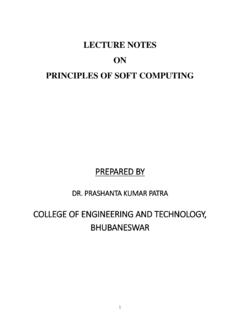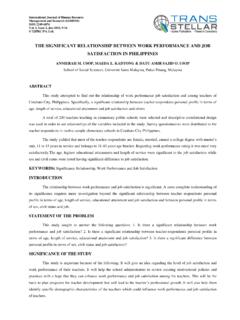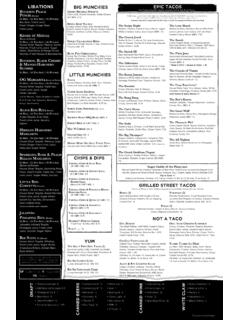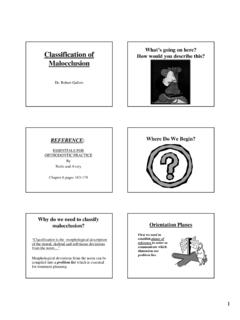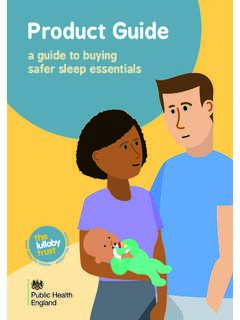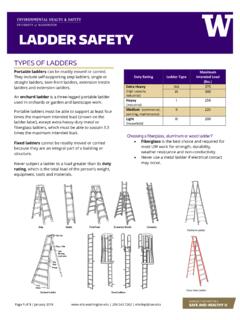Transcription of Ostomy: Choosing the Right Appliance
1 ostomy : Choosing the Right Appliance Joy Hooper RN, BSN, CWOCN, OMS, WCC Wound Care Education Institute The information in this handout reflects the state of knowledge, current at time of publication; however, the authors do not take responsibility for data, information, and significant findings related to the topics discussed that became known to the general public following publication. The recommendations contained herein may not be appropriate for use in all circumstances. Decisions to adopt any particular recommendation must be made by the practitioner in light of available resources and circumstances presented by individual patients. Acknowledgements: This handout and presentation was prepared using information generally acknowledged to be consistent with current industry standards. The authors whose works are cited in the Bibliography Section of this manual are hereby recognized and appreciated.
2 All product names, logos and trademarks used in this presentation are the property of the respective trademark owners. and denote registered trademarks in the United States and other countries. "The use of NPUAP/EPUAP/PPPIA material does not imply endorsement of products or programs associated with the use of the material." Wound Care Education Institute (WCEI) A division of OnCourse Learning 25828 Pastoral Dr. Plainfield, IL 60585 Fax: 877-649-6021 Phone: 877-462-9234 Email: Website s: Copyright 2018 by Wound Care Education Institute All rights Reserved. WCEI grants permission for photocopying for limited personal or educational use only. This consent does not extend to other kinds of copying, such as copying for general distribution, for advertising or promotional purposes, for creating new collective works, or for resale.
3 1 Objectives: Upon completion, participants will be able to: 1) Discuss at least 5 clinical, physical, and social considerations when Choosing an ostomy pouching system. 2) Identify assistive pouching techniques/interventions for skin folds, retracted stoma, and soft abdomen. I. Appliance System A. Definitions 1. Appliance - refers to the entire containment system, the pouch, and the skin barrier; can be either a one piece or two piece systems; can also come in closed end or drainable models. Also known as (AKA) pouching system. 2. Pouch AKA bag (However do not refer to it as a bag ); designed to catch and contain stoma effluent (stool/urine). The pouch is made of plastic and is held to the body with an adhesive, (skin barrier). 3. Skin Barrier AKA barrier , wafer , or faceplate ; is adhesive; adheres to the skin around the stoma; helps to protect skin from stoma output, and attaches the pouch to the body.
4 B. Appliance Goals 1. Provide a predictable, reliable wear 2. Wear time should be at least three days and it is not recommended to exceed seven days 2 3. The patient should have expectations that if there is no change in output that their pouch will remain intact and provide containment of effluent for a specific period of time. a. Be comfortable. b. Be inconspicuous. c. Easy to apply and to remove. d. Be odor proof. 1 4. There should be no odor when the pouch is in place unless it is being emptied or changed. 2 5. Protect the peristomal skin. 1 a. Peristomal skin irritation is a complication associated with ostomy surgery. It can also affect adjustment to the ostomy and stoma but can be corrected with the appropriate pouching system. C. In order to attain a reasonable quality of life, patients must be confident that the pouching system will maintain a leak-proof seal for a sustained, predictable wear ,5 Clinicians must select pouching systems or modify pouching systems so they will promote self-care to the patients maximum physical and mental ,4 II.
5 Considerations in Appliance System Selection A. Clinical Considerations 1. Perform Complete stoma assessment 2. Type, size, location, peristomal skin, shape, protrusion, complications, etc. B. Physical Considerations 1. Independent or Dependent with self-care 2. Dexterity Impairment Is there hemiparesis, paralysis, or any degree of arthritis that inhibits the patient and or caregiver to perform the tasks necessary to change or empty the Appliance . 3. Visual Impairment Is there a visual deficit present; patient cannot see the stoma; unable to see the lines on the wafer to cut it to fit and or where to place the Appliance . 4. Cognitive Impairment 5. Moisture Complications frequent perspiration, hot flashes, environmental concerns C. Social Considerations 1. Activity level 2 2. Sports 3. Financial - Financial burden of ostomy supplies Patient is self-pay and cannot afford the supplies.
6 The amount of supplies patient needs or goes through is not allowable by Medicare / Medicaid/ private insurance. Patient is unable to pay the co-pay. 4. Cultural Religious 5. Intimacy D. Nutrition 1. Diet complications, intolerance, no restrictions 2. Manipulates diet and fluid intake to manage effluent output 3. Fluid intake amount, frequency 4. Recent weight gain or loss E. Appliance System in Use 1. One Piece or Two Piece 2. Brand, Model and Number 3. Skin Barrier a. Flat, Convex b. Round or Oval c. Cut to fit or Pre-Cut d. Flexible, Firm e. Re-useable, Disposable f. Tape Frame 4. Pouch a. Transparent or Opaque b. Drainable, closed c. Re-useable, Disposable d. Closure type: separate or integrated e. Material: plastic; fabric covered f. Disposable liners g. Stoma Cap F. Extra Adhesives 1. Paste Brand 2. Ring or Strip Barriers; Brand and amount 3.
7 Liquid Skin Barrier 4. Cement, ostomy Glue G. Accessories 1. Stoma Filter 2. Belt stoma, hernia, support 3. Pouch lubricant commercial, home remedies 4. Odor Control a. Integrated charcoal pouch filter b. Add on pouch filter/vent c. External liquid into pouch d. External powder into pouch e. External tablet into pouch f. Systemic liquid, powder, tablet, herbs or foods g. Other 5. Drainage Bag 6. Cover 7. Protector, Noise suppressor 3 H. Response to Appliance 1. Skin Barrier Fit a. Opening No problem, too large, too small b. Fails to maintain contact with skin c. Adhesion Failure, weak, strong d. Amount of Erosion e. Surrounding topography creases, scars, incision, hernia, skin fold, boney prominence, etc. f. Flange coupling seal failure g. Allergies; skin stripping h. Multiple stomas skin barriers overlap 2. Leakage location: skin barrier, pouch; frequency; nighttime; amount; predisposing factors 3.
8 Friction Skin folds, edges cutting into surrounding skin, clothing or binders complications 4. Wear Time a. Skin Barrier b. Pouch 2. Change Frequency scheduled 3. Unscheduled changes Reason; leaking, odor, lifting, etc. 4. Emptying a. Frequency Number of times during day and during night b. Amount 1/3 full, half full, completely full c. Technique on toilet facing front/rear, kneeling before toilet, on chair before toilet, standing over toilet, standing over sink, standing over urinal, other d. Complications splashing, sticking to pouch, odor, e. Rinsing Pouch never, rarely, sometimes, always; technique used I. Patient Preferences 1. Is current system meeting patient needs and expectations 2. Satisfactory or problem with: a. Pouch Shape b. Pouch volume c. Pouch material flimsy, stiff, noisy, sweaty; etc.
9 D. Change Frequency e. Difficulty/time consumption of preparation and application f. Adhesion g. Pouch Profile bulky, large, difficult to conceal 3. Pouch Direction a. Straight up and down with tail toward feet b. Sideways with tail toward left or Right side c. Slight angle away from groin d. Slight angle toward groin 4. Pouch containment a. Folds up pouch to minimize appearance; satisfactory or problem b. Pouch cover satisfactory or problem c. Binder/Belt to minimize appearance satisfactory or problem 5. Effluent concerns a. Volume b. Odor c. Flatus d. Pancaking e. Ballooning 4 6. Waste Disposal preferences closed end, drainable 7. Connect to bedside drainage complications, satisfactory, frequency, adaptors and appliances used; securement of bedside drainage: clip, loose, leg bag, dependent position; etc. 8. Peristomal skin care procedure, frequency, products used, peristomal hair removal, complications 9.
10 Bathing with or without pouch, change before or after bath; protective devices while bathing 10. Easy of Handling (very difficult, difficult, acceptable, easy, very easy) 11. Security ('very poor', 'poor', 'acceptable', 'good' and 'very good'); techniques for securement: tape border, ostomy adhesives, belt, binder, etc. 12. Comfort (very uncomfortable, uncomfortable, acceptable, comfortable, very comfortable) pain assessment; 13. Irrigation Schedule, outcomes, leakage between irrigations 14. Activity restrictions pouch limits, security, odor, etc. III. Pouching Solutions A. Visual Deficits 1. Pre-cut barrier less pieces to manipulate B. Dexterity Deficits 1. One or two piece with closed end pouch; discard rather than empty C. Flush/Retracted Stoma: 1. Convexity is usually helpful 2. Belts add support at 3 and 9 o clock a.




